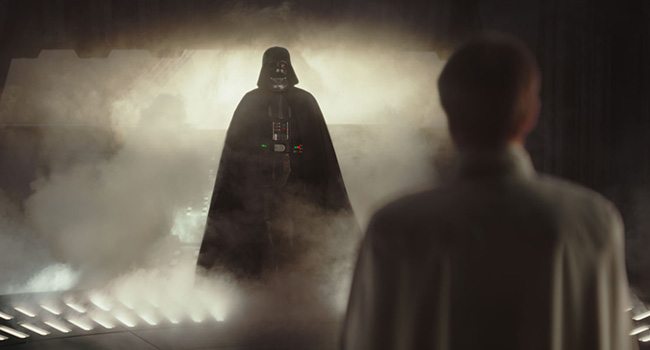Star Wars: a universe of duality.
The dark side vs. the light, the Rebel Alliance vs. the Galactic Empire, the original trilogy vs. the prequel trilogy — Star Wars films are not shy about the clear-cut contrasts that define their adventures. “Rogue One: A Star Wars Story” lives in the middle of the chronological spectrum: before the hero’s journey of the original trilogy and after the bombastic battles of the prequels.
It also lives in the middle of the quality spectrum. Never powerfully good nor painfully bad, “Rogue One” is all the more forgettable in a franchise ruled by duality.

Though there is quite the compelling fight at the center of “Rogue One:” great visuals vs. an uninspired screenplay. Much like the authoritarian dark side, the writing in this film corrupts everything it reaches.
Allegedly having undergone rewrites and doctoring on more than one occasion, the screenplay strips the narrative of subtlety. Major plot points and entire sequences of events are explained in detail before they happen, as if the writers were afraid that surprising viewers would scare them off into the far, far corners of the galaxy.
This fear dampens otherwise momentous scenes: twists and grand set pieces are so clearly telegraphed that it’s difficult to not know what to expect — especially if you’ve seen another Star Wars film.
The supporting cast is chock full of likable characters. Not because they have depth, but because they’re diverse and interesting on a surface level. I say supporting cast because no one gets enough screen time or attention to be declared a main character: even Felicity Jones’ Jyn Erso feels sidelined in what was ostensibly her own movie. Meeting Darth Vader again is a reason to cheer (and cower) though.
World champion martial artist Donnie Yen is a standout as a blind warrior and devout servant of The Force. It’s a guilty pleasure to watch a blind man defeat Imperial soldiers in inventive ways. But it’s K-2SO, an Imperial droid repurposed by the rebels, that steals the show. He’s voiced by comedic gem Alan Tudyk and every bit of sarcasm he shoots off is gold. “Firefly” fans, this is the actor behind Wash. Need I say more?
Nobody receives enough genuine development to earn our care, but they’re fun character templates. In the absence of convincing characters that we can identify with, we get cliché catalysts that spur on their motivations, causing plot holes and nonsensical arcs. I had little emotional connection to any of them. The film’s most poignant touch couldn’t compete with the simple joy of rediscovering the Millennium Falcon in “The Force Awakens.”
The dialogue isn’t bad so much as it’s cringe-worthy. Cheesy platitudes, on the nose speeches, awkwardly forced callbacks and puns rob the story of the gritty vibe the visuals strive for. Imagine the feeling you get when a villain stops everything to explain their evil plan, stretched across a whole movie.
The direction and visual work are the shining stars of “Rogue One.” Director Gareth Edwards and cinematographer Greig Fraser frame a variety of Star Wars-y elements together in beautiful ways, establishing a fresh sense of connectedness for the series.
“Rogue One” is distinctively pretty to look at — like a montage of fantasy paintings. It features some of the most intense gunplay in the franchise, more than making up for the near total lack of lightsabers.
Oddly enough, there are two prominent human characters that are entirely CGI and they look abysmal. I felt embarrassed for the animated abominations “acting” alongside actual people.
Overall, slick style cannot make up for a tediously typical experience. At least I remember the prequels for their awfulness: I am writing this review mere hours after seeing “Rogue One” and already the movie’s events are escaping me. Star Wars should not be ordinary.
Oh and the ending is abrupt.
★★★ (3 out of 5)




